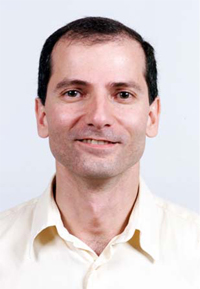Safa Frédéric - Gaia
Gaia contributors
Gaia was proposed in 1993 and since then, many people have been involved in the Gaia mission, whether at ESA, at industry side or at one of the institutes involved in the Gaia data processing. The Gaia Data Processing and Analysis Consortium (DPAC) is a collaboration which consists of around 450 scientists and engineers.
The list of Gaia contributors presented here should not be considered a complete representation of the entire consortium and should not be considered as a list of currenly active people on the Gaia mission. A more complete list of Gaia contributors that were involved in the creation of the Gaia catalogues can be obtained from the author lists of the Gaia Collaboration overview papers (for Gaia Data Release 1 see here, for Gaia Data Release 2 see here, for Gaia Early Data Release 3 see here, for the full Gaia Data Release 3 see here, for Gaia Focused Product Release see here). A history of contributions to the Gaia mission can be found from the acknowledgements given with each data release.
Gaia DPAC members who wish to be featured on these pages can contact the Gaia Helpdesk. Anyone who wishes to be removed from this website can contact the Gaia Helpdesk.
 |
Frédéric Safa European Space Agency |
|
Frédéric Safa is Head of ESA's Advanced Studies and Technology Preparation Division at ESTEC. Prior to taking up this position in October 2007, Frédéric was closely involved with Gaia as a member of the EADS Astrium team in Toulouse. In his role as Science and Missions Performance Expert he was, since 2006, the Astrium interface with the Gaia Science Team. Frédéric has been deeply involved in many aspects of the design of the Gaia spacecraft and payload, and has introduced several innovative aspects. In 2002, in the early design phase, he proposed to superimpose the two astrometric focal planes using a small beam combiner located in the image space for simplifying the payload manufacturing and enabling a Soyuz Fregat launch. He was also the originator of other innovations such as the silicon carbide dual telescope concept using a common toroidal structure, and the basic-angle monitoring concept in orbit. From 2002 to 2007, Frédéric led the EADS Astrium Instrument Advanced Studies Department where Gaia payload studies are conducted. He led the Gaia payload design in EADS Astrium until 2004 and subsequently initiated and promoted the evolutions of the EADS Astrium design in 2004-2005. [Published: 21/02/2006| Updated: 01/10/2007] |
|
- Removed a total of (2) style text-align:center;
- Removed a total of (4) style text-align:justify;
- Removed a total of (1) border attribute.
- Removed a total of (1) cellpadding attribute.
- Removed a total of (1) cellspacing attribute.
Gaia people archive
- Removed a total of (1) style overflow:auto;
- Removed a total of (2) border attribute.
- Removed a total of (2) cellpadding attribute.
- Removed a total of (2) cellspacing attribute.








































 Sign in
Sign in
 Science & Technology
Science & Technology

